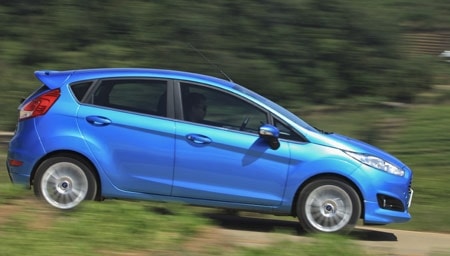Be willing to play with small engine, high capacity cars
A new car revolution is underway as manufacturers create cars with smaller engines that are more powerful. However, they also cost more.
In many areas, consumers have become accustomed to the concept of “smaller yet more powerful.” The same is true for modern cars.
“If you buy a car now and still believe that a car with a 3.0L engine will be more powerful than a car with a 2.0L engine, that would be a big mistake,” said Trevor Worthington, vice president, product development, Asia Pacific, Ford Motor Company.
In Vietnam, customers are still unfamiliar with 3-cylinder, 1.0L engine cars. However, this is not a step back in technology, on the contrary, it will create a powerful machine with few cylinders, small capacity but "huge" capacity.
miniaturization, miniature, engine, motor, technology, technology, modern, contemporary, connection, connection, capacity, power.
 |
Small engine but big capacity cars are the new trend.
Over the years, in response to market demands, car manufacturers have been increasing the power of their vehicles by increasing engine capacity and at the same time making their products more fuel efficient.
With fuel saving policies, many countries have encouraged the development of small capacity, low fuel consumption. However, this contradicts the customer's demand for powerful cars. And this has been solved by manufacturers with new technologies.
Recently, Ford introduced to Asian customers the new Fiesta, using a 1.0L, 3-cylinder EcoBoost engine with a maximum capacity of 125 horsepower. This engine is as powerful as the previous Ford 1.6L engine, but fuel consumption is reduced by 12%, only 5.3L/100km, very smooth. Customers who test drive the 1.0L car without prior knowledge will not be able to distinguish it from the previous 1.6L engine.
Not only that, Ford also "shrinks" the 1.6L, 4-cylinder engine of Ford with capacity up to 200 horsepower and 2.0L, 4-cylinder with capacity up to 240 horsepower. These engines will be installed in models that previously used large engines.
BMW has also used the Turbo N20 engine to equip its latest models from Series 5, Series 3 to Z4, X1, X3... Turbo N20 is a 4-cylinder, 2.0L engine but has a very high efficiency twin turbocharger.
Three famous Japanese car manufacturers, Toyota, Honda and Subaru, also have plans to "downsize" engines and add turbochargers to produce greater output power.
Toyota, which has never before fitted a turbocharger to any gasoline-powered car, has also announced its new engine trend: downsizing and increasing power. Subaru has a few of these, with a 1.6L engine instead of the previous 2.0L, but still ensuring the car has higher performance and output like a 2.5L engine.
Honda also announced it would downsize engines and add turbochargers to increase power output at the 2013 Tokyo Motor Show, with the Civic Type-R hatchback boasting 300 horsepower despite the reduced displacement.
Today's technology has actually allowed for a reduction in displacement and number of cylinders while still maintaining power and reducing fuel consumption. Adding a turbocharger system can increase the price of the product. However, when reducing the number of cylinders from 8, 6 to 4, or 4 to 3, the manufacturer saves on raw materials, and the customer will save on maintenance, service and daily fuel costs.
Customers will no longer care about big or small engines, but instead about performance and operating features. They do not care about the number of cylinders, but instead about horsepower and fuel consumption. However, in the Vietnamese market, vehicles using this technology are still very new and the prices are quite high. .
According to vietnamnet






